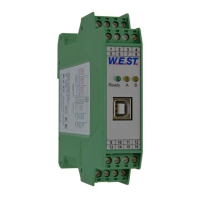Why W.E.S.T. Elektronik Amplifier module does not respond and READY LED is off?
- JjonathanevansJul 31, 2025
If the ENABLE is active, the module of W.E.S.T. Elektronik Amplifier does not respond, and the READY LED is off, it is probably because the power supply is disconnected or the ENABLE signal is not present. If there is no power supply, there is also no communication via our operating program. If the connection to the WPC-300 exists, the power supply is also available. In this case the availability of the ENABLE signal can be checked via the monitor.

